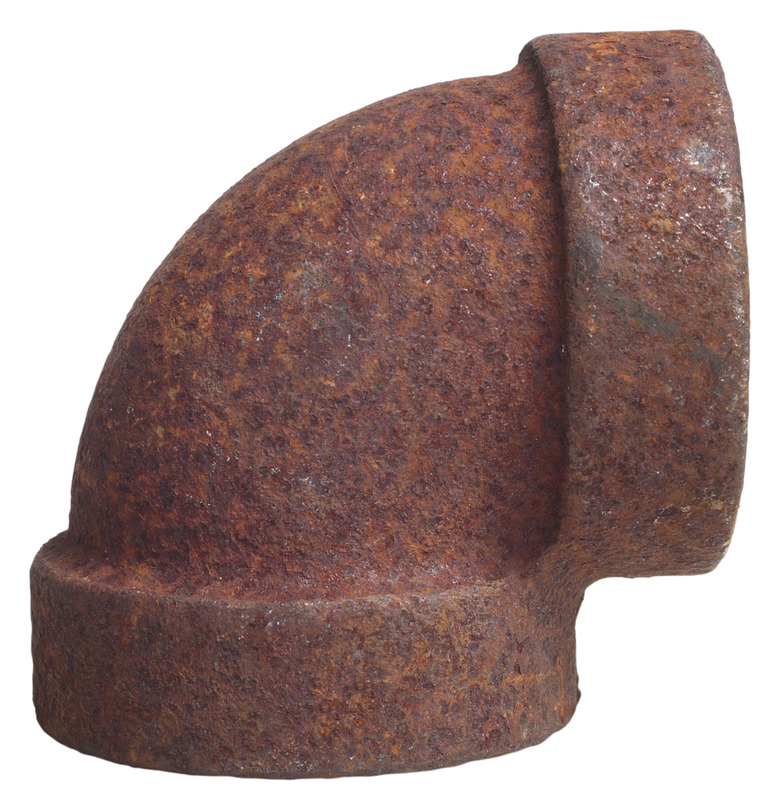Examples Of Chemical Compounds That Need Roman Numerals
Many metal elements have a number of possible ionic states, also known as oxidation states. In order to denote which oxidation state of a metal occurs in a chemical compound, scientists can use two different naming conventions. In the "common name" convention, the suffix "-ous" denotes the lower oxidation state, while the suffix "-ic" denotes the higher oxidation state. Chemists favor the Roman numeral method, in which a Roman numeral follows the name of the metal.
Copper Chlorides
Copper Chlorides
When copper bonds with chlorine, it forms either CuCl or CuCl2. In the case of CuCl, the chloride ion has a charge of -1, so copper must have a charge of +1 to make the compound neutral. Therefore, CuCl is named copper(I) chloride. Copper(I) chloride, or cuprous chloride, which occurs as a white power. It can be used to add color to fireworks. In the case of CuCl2, the two chloride ions have a net charge of -2, so the copper ion must have a charge of +2. Therefore, CuCl2 is named copper(II) chloride. Copper(II) chloride, or cupric chloride, has a blue-green color when hydrated. Like copper(I) chloride, it can be used to add color to fireworks. Scientists also use it as a catalyst in a number of reactions. It can be used as a dye or pigment in a number of other settings.
Iron Oxides
Iron Oxides
Iron can bond with oxygen in a number of ways. FeO involves an oxygen ion with a charge of -2. Therefore, the iron atom must have a charge of +2. In this case, the compound is named iron(II) oxide. Iron(II) oxide, or ferrous oxide, is found in significant quantities in the Earth's mantle. Fe2O3 involves three oxygen ions, totaling a net charge of -6. Therefore, the two iron atoms must have a total charge of +6. In this case, the compound is iron(III) oxide. Hydrated iron(III) oxide, or ferric oxide, is commonly known as rust. Lastly, in the case of Fe3O4, the four oxygen atoms have a net charge of -8. In this case, the three iron atoms must total +8. This is obtained with two iron atoms in the +3 oxidation state and one in the +2 oxidation state. This compound is named iron(II, III) oxide.
Tin Chlorides
Tin Chlorides
Tin has common oxidation states of +2 and +4. When it bonds with chlorine ions, it can produce two different compounds depending on its oxidation state. In the case of SnCl2, the two chlorine atoms have a net charge of -2. Therefore, the tin must have an oxidation state of +2. In this case, the compound named tin(II) chloride. Tin(II) chloride, or stannous chloride, is a colorless solid used in textile dyeing, electroplating and food preservation. In the case of SnCl4, the four chlorine ions have a net charge of -4. A tin ion with an oxidation state of +4 will bond with all of these chlorine ions to form tin(IV) chloride. Tin(IV) chloride, or stannic chloride, occurs as a colorless liquid under standard conditions.
Mercury Bromides
Mercury Bromides
When mercury combines with bromine, it can form the compounds Hg2Br2 and HgBr2. In Hg2Br2, the two bromine ions have a net charge of -2, and therefore each of the mercury ions must have an oxidation state of +1. This compound is named mercury(I) bromide. Mercury(I) bromide, or mercurous bromide, is useful in acousto-optic devices. In HgBr2, the net charge of the bromine ions is the same, but there is only one mercury ion. In this case, it must have an oxidation state of +2. HgBr2 is named mercury(II) bromide. Mercury(II) bromide, or mercuric bromide, is very toxic.
References
- Purdue University: Nomenclature
- University of North Carolina at Pembroke: Copper
- University of North Carolina at Pembroke: Iron
- Arizona State University: Tin
- Carnegie Science Institute: A New Kind of Metal in the Deep Earth
- Florida State University: Stannous Chloride
- Harvard: Mercurous Bromide Acousto-Optic Devices
- California State University, Fresno: MSDS for Mecuric Bromide
- National Pollutant Inventory: Copper and Compounds
Cite This Article
MLA
Murmson, Serm. "Examples Of Chemical Compounds That Need Roman Numerals" sciencing.com, https://www.sciencing.com/examples-chemical-compounds-need-roman-numerals-36588/. 24 April 2017.
APA
Murmson, Serm. (2017, April 24). Examples Of Chemical Compounds That Need Roman Numerals. sciencing.com. Retrieved from https://www.sciencing.com/examples-chemical-compounds-need-roman-numerals-36588/
Chicago
Murmson, Serm. Examples Of Chemical Compounds That Need Roman Numerals last modified August 30, 2022. https://www.sciencing.com/examples-chemical-compounds-need-roman-numerals-36588/
